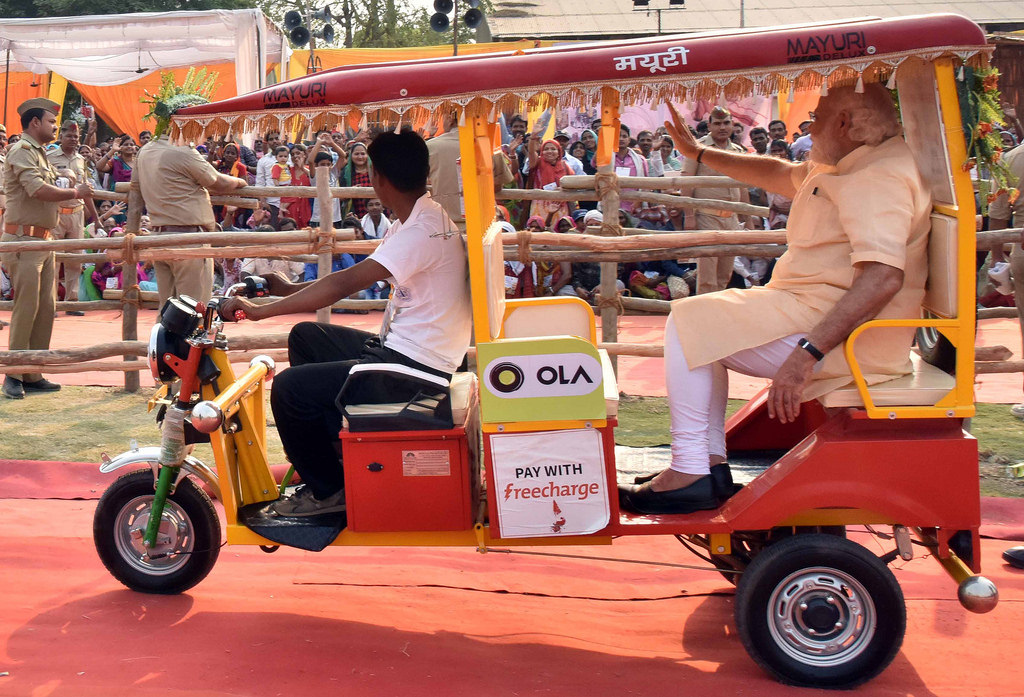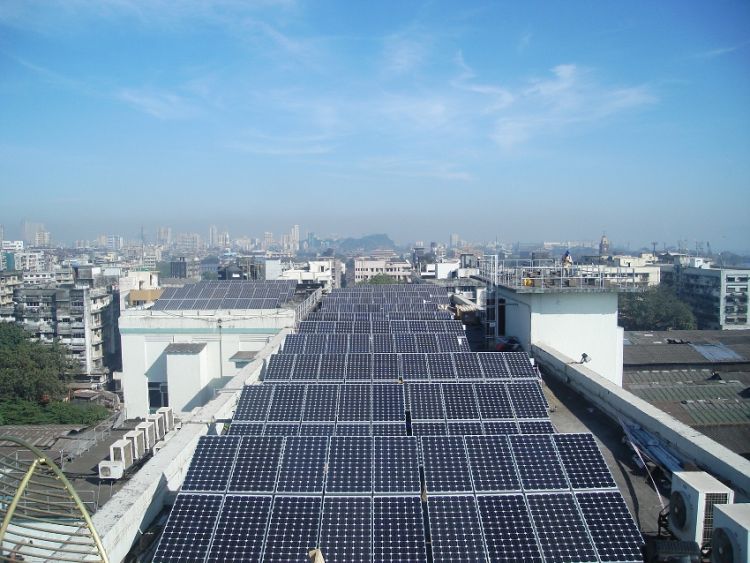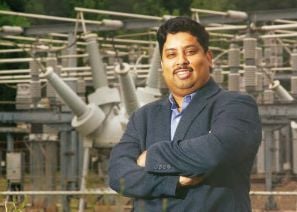
Dr Rahul Walawalkar is president and MD of Customized Energy Solutions and an executive director of the India Energy Storage Alliance. A proud evangelist for renewables and advanced energy storage technologies, Andy Colthorpe asked him about what 2017 meant for India’s storage industry and what’s getting him enthused – or apprehensive – about 2018.
Did 2017 meet your expectations or surpass them?
The Energy storage industry will look at 2017 as the year when India crossed 2GWh of deployment of advanced energy storage solutions. eRickshaws, telecom towers and other distributed systems contributed to the early deployment. Also this was the year when Indian industries started investing in setting up manufacturing capabilities for developing li-ion battery packs in India with IESA members such as Exicom, Delta and ACME leading the way.
Apart from stationary storage, EVs also got a significant boost with clear support from the Indian government. Energy Efficiency Services Ltd (EESL) has concluded world’s largest procurement of 10,000 EVs in a single tender. IESA expects solar integration, electric vehicle and charging infrastructure and Commercial & Industrial (C&I) applications will act as catalyst for energy storage adaptations and deployment in India in 2018.
Try Premium for just $1
- Full premium access for the first month at only $1
- Converts to an annual rate after 30 days unless cancelled
- Cancel anytime during the trial period
Premium Benefits
- Expert industry analysis and interviews
- Digital access to PV Tech Power journal
- Exclusive event discounts
Or get the full Premium subscription right away
Or continue reading this article for free
Last year also saw the creation of the 3 BIS (Bureau of Indian Standards) committees for developing standards for batteries, charging infrastructure and stationary energy storage systems. We hope that this will lead to the creation of industry standards that can help accelerate adoption of energy storage and EVs in India, while maintaining safety and quality.
The only disappointment for the industry in 2017 was the flip flops from various government agencies on large-scale RE (renewable energy) integration projects. There were over 100MWh of grid-scale energy storage project request for proposals (RFPs) released during 2017, unfortunately most have been stuck due to mixed signals from the Ministry of New and Renewable Energy (MNRE). The IESA is working closely with all the policy makers and we anticipate most of these projects can move forward in 2018. MNRE has now constituted an Expert Committee on Energy Storage with the goal of releasing a National Energy Storage Mission by April – May 2018. IESA has been inducted as a member of this committee and we are working closely with all IESA members for putting together concrete recommendations for accelerating deployment as well as R&D and manufacturing capabilities for energy storage, microgrids and EVs in India.

What are you expecting to see for 2018, and what would you hope to see this year?
We anticipate that with the global scale-up in manufacturing, advanced energy storage prices will continue to drop by over 10% in 2018. With introduction of various EVs (across 2W, 3W, 4W and commercial vehicles), India will start witnessing wider adoption of EVs in 2018, fuelled by central procurement led by government energy service company EESL – which is the world’s largest public ESCO – and various state agencies.
This year should also witness pickup of EV charging infrastructure deployment in various metro cities. The stationary energy storage market will also start seeing traction with MW-scale deployments for both renewable integration as well as C&I applications.
If we start deploying energy storage projects in a systematic manner this can create a huge interest for local manufacturing and system integration capabilities. By mid-2018, India will have over 1GWh of li-ion battery pack manufacturing capacity. We also anticipate that in 2018 at least two li-ion cell manufacturing plants with capacity of 1GWh or more will start construction in India with anticipated completion for early 2020, bringing India on the global map of ‘Gigafactories’.
IESA has set a vision to make India a global hub for manufacturing of advanced energy storage systems and we hope that with a little consistent policy direction and support in implementation, we can achieve this dream by 2022.
What will be the biggest challenges to face the industry for 2018?
As with any fast growing area, we anticipate some teething pains for the industry as we develop the skills and capabilities for large-scale adoption of energy storage, microgrids and EVs in India. India has significant engineering capabilities, but qualified resources for deployment, operations and managing of advanced energy storage solutions will need some time. In the meantime, with the growing pressure of cost reduction, we hope that industry does not take shortcuts to compromise on safety.
IESA has been working on addressing this with help of members such as UL and CSA, and started developing energy storage standards roadmap for India in 2016. Also as mentioned previously, BIS has formed 3 committees to develop standards for batteries, EV charging infra and stationary energy storage systems. We hope that fast adoption of these standards can help address some of the safety and quality concerns for end users. IESA is also working to address the skills shortage by developing training programs in collaboration with members of IESA-Knowledge partner Network such as GERMI (Gujarat Energy Research and Management), ASCI (Administrative Staff College of India) and IEEMA (Indian Electrical and Electronic Manufacturers Association).
What changes would you like to see – perhaps at policy or industry level – that could improve the prospects for deployment of energy storage in a cost-effective and transformative way?
Policymakers in India have recognised the potential of energy storage to help the Indian government meet various policy priorities such as the National Solar Mission, National Electric Mobility Mission and Mission for Energy Access.
NITI Aayog (the National Institution for Transforming India) as well as the MNRE have been working on the draft National Energy Storage Mission for the past year. According to the policymakers the biggest challenge for storage is the higher upfront cost. Luckily globally the prices for storage technologies are reducing rapidly and have fallen by 90% in the past 10 years. We are also confident that with local manufacturing, we can accelerate this cost reduction.
At the same time, there are other challenges on the policy front. The main policy intervention required is the need for transparent price signals for electricity that value peaking power and flexibility. We also need removal of barriers such as higher GST (28% for batteries vs 5% for solar) and import duties, in order to kickstart the market for advanced energy storage in India.
Currently most of investment decisions for the power sector are being driven by average levelised costs, while there are various applications where the marginal costs of current technologies or solutions being planned is significantly higher even than the current cost of storage technologies. For example, diesel replacement is a low-hanging fruit, but due to various subsidies given to island consumers, they are not witnessing the true cost of power from such sources. Also even in case of areas where diesel generators are used, there is an opportunity to improve efficiency by increasing loading of the generators for certain hours and shutting them down for other times where solar and storage can meet the load. On part loaded condition the marginal cost of electricity from diesel generator could be higher than 20 Rs / kWh (US$0.31), but due to the lack of policy certainty and delays in decisionmaking, we are yet to achieve goals set up for ‘Greening the Islands’.
In case of electric transportation, there should be a clear strategy for addressing the need for charging infrastructure. For the growth of this market, we need to focus on building local manufacturing eco systems as well as investing in skill development for ensuring after-sales support.

What are some of the most exciting developments in a) technology b) finance and business and / or c) policy and regulation that could have a big impact on the energy storage market this year and in the near future?
With the rapid reduction of solar and wind energy costs, the Indian grid now needs solutions for renewable integration. This transition is supported by significant push for ‘Gigafactories’ for advanced energy storage technologies such as li-ion that could drive down the cost of energy storage at a pace even faster than the solar PV cost reductions witnessed in the past decade.
According to IESA research estimates, by 2020 there will be at least 3 companies globally with 25GWh+ annual production capacity and another 5 companies with 10GWh+ annual production capacity for Li-Ion batteries. The new projected capacity for 2020 is now over 400GWh, based on latest projections by IESA Research. India is targeting 5-10GWh of manufacturing by 2020. 1GWh cell manufacturing would need an investment of US$200-250 million. Looking at the potential India has to create a 10GWh capacity, India could attract investments to the tune of US$3 billion by 2020. And as this happens, ancillary development including module development, containers, transformers, inverters could need an equal amount of investment, taking the total potential to US$6 billion.
IESA is working with NITI Aayog and various government departments to develop a comprehensive policy for encouraging such investments. We are also using our global network to help global technology companies find the right partners for technology transfer and setting up of manufacturing. On the policy front there are number of key initiatives such as development of national energy storage mission by MNRE, launch of EV Policy framework by NITI Aayog, introduction of ancillary services by CERC (Central Electricity Regulatory Commission) that can have significant positive impacts on the energy storage and EV sectors.
